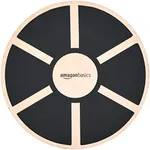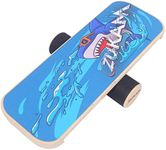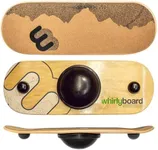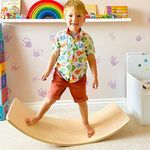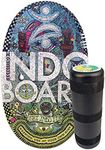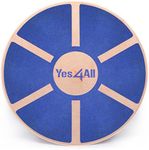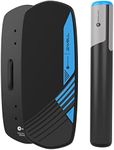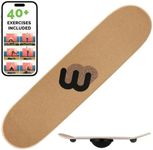Buying Guide for the Best Balance Boards
Choosing the right balance board can make a big difference in your workouts, rehabilitation, or even just for fun. Balance boards come in various shapes and styles, each designed to challenge your stability and help improve your balance, core strength, and coordination. Before buying, think about your main goal—whether it's fitness, physical therapy, sports training, or just casual use. Understanding the key features will help you find a board that matches your needs and skill level.Type of Balance BoardThe type of balance board refers to its overall design and how it creates instability. Common types include rocker boards (which tilt side to side), wobble boards (which move in all directions), and roller boards (which use a separate roller underneath). Rocker boards are generally easier and good for beginners or rehabilitation, while wobble and roller boards offer more challenge and are better for advanced users or athletes. Consider your experience level and intended use when choosing the type.
Board Surface MaterialThe surface material of the board affects grip, comfort, and durability. Boards may have wooden, plastic, or rubberized surfaces. Wooden boards are sturdy and long-lasting, plastic boards are lighter and often more affordable, and rubberized surfaces provide extra grip for safety. If you plan to use the board barefoot or for long sessions, a comfortable, non-slip surface is important. Think about where and how you'll use the board to decide which material suits you best.
Size and ShapeThe size and shape of the balance board determine how much space you have for your feet and how challenging the board is to use. Larger boards offer more stability and are easier for beginners, while smaller or uniquely shaped boards can increase the difficulty. If you have larger feet or want to perform a variety of exercises, a bigger board may be more comfortable. For portability or advanced training, a smaller board might be preferable.
Weight CapacityWeight capacity is the maximum weight the board can safely support. This is important for safety and durability. Boards with higher weight limits are generally more robust and suitable for a wider range of users. Always check the weight capacity to ensure it matches your body weight and any additional load you might use during exercises.
Level of InstabilityThe level of instability refers to how much the board moves and how challenging it is to balance on. Some boards have adjustable features to increase or decrease instability, while others are fixed. Beginners or those using the board for rehabilitation may want less instability, while athletes or advanced users may seek more challenge. Think about your current balance skills and how much you want to push yourself.
Portability and StoragePortability and storage are about how easy it is to move and store the board. Some boards are lightweight and compact, making them easy to carry or tuck away, while others are bulkier. If you have limited space or want to take your board to different locations, consider a model that's easy to transport and store.

